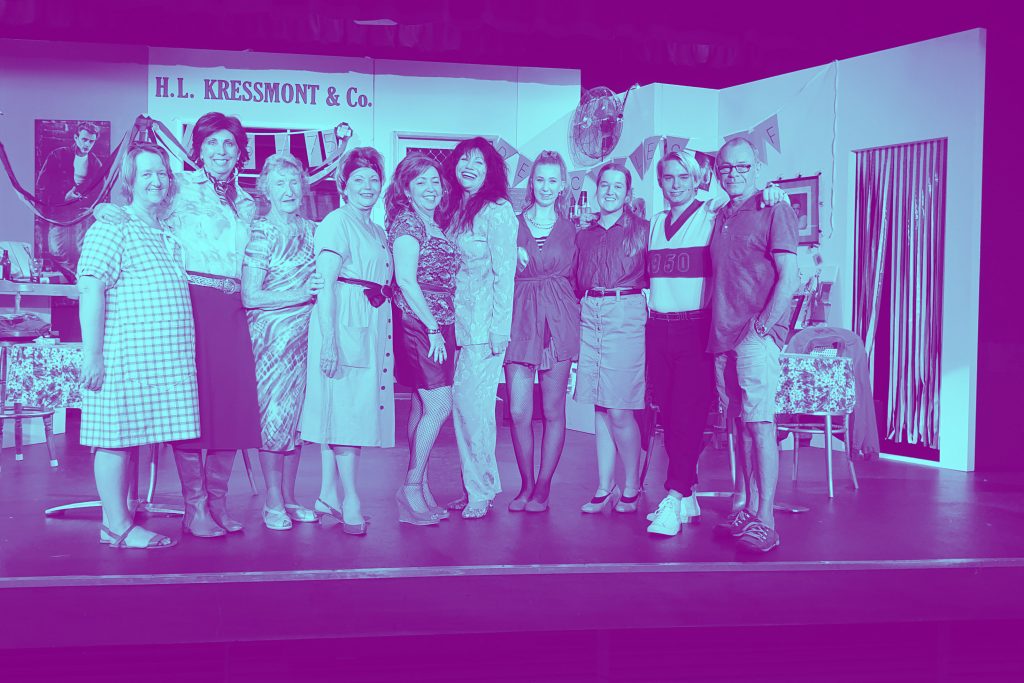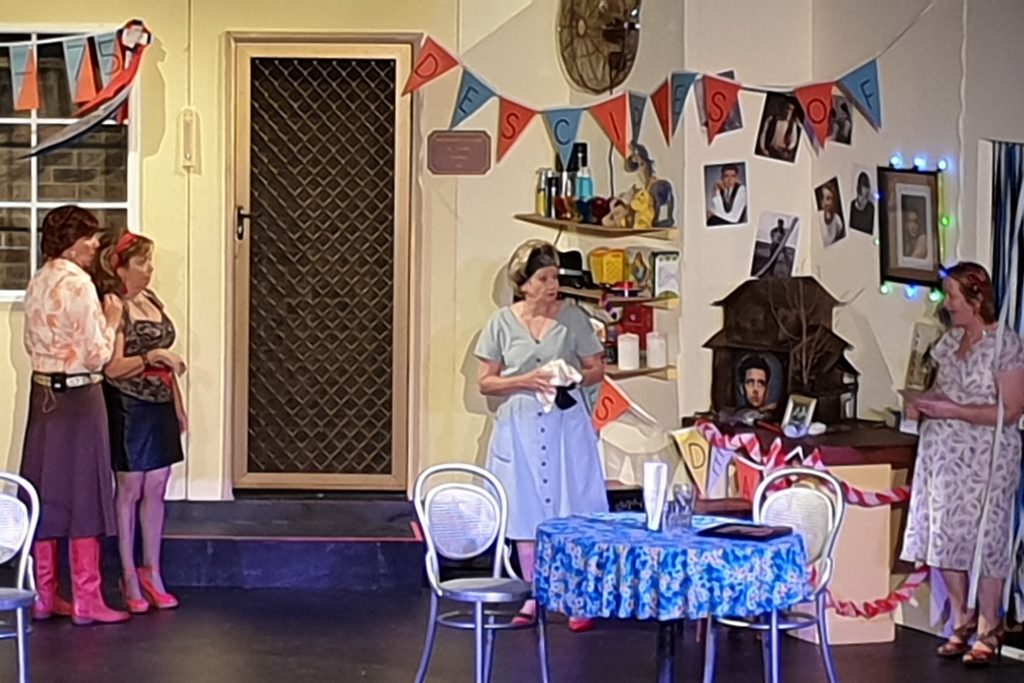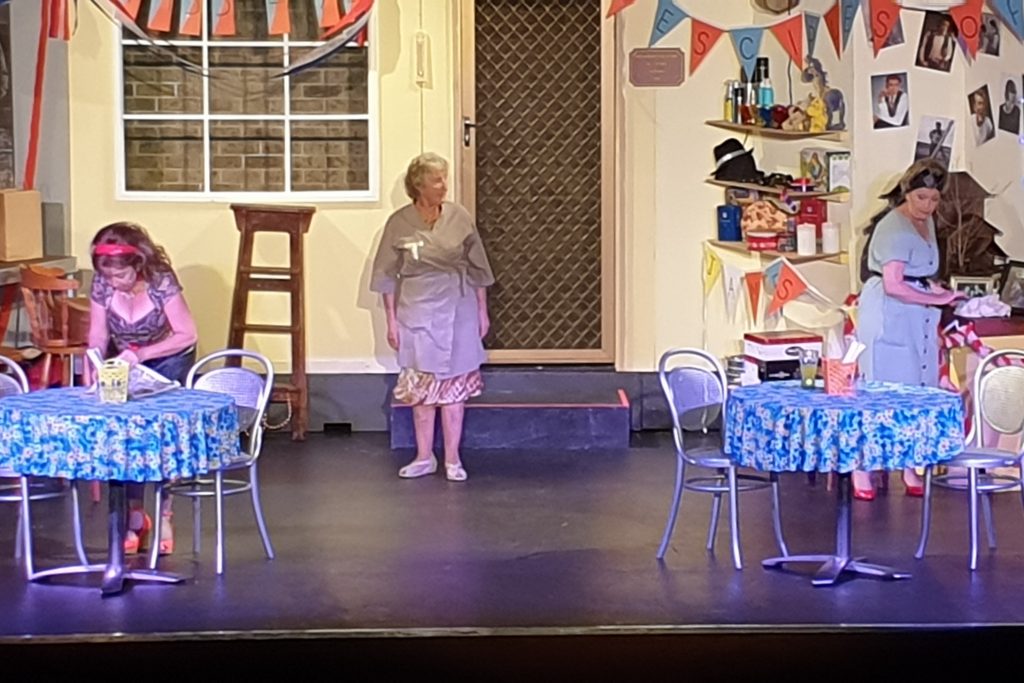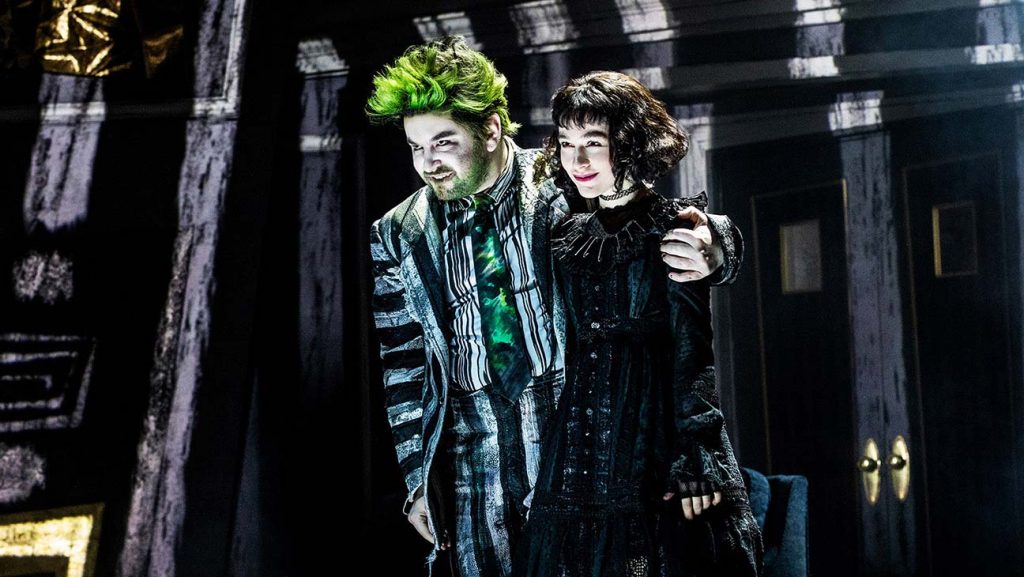
‘Come Back to the Five and Dime, Jimmy Dean, Jimmy Dean’ // Tweed Theatre Company
‘Come Back to the Five and Dime, Jimmy Dean, Jimmy Dean’ was surprising.
Gold Coast theatre-goers unfamiliar with this script may be reluctant to make the trip down to Tweed Heads to see a show with an absurdly long title written over forty years ago that was critically panned upon its initial release. Plot descriptions and promotional materials online don’t make the work sound any more enticing either, only telling us that the story takes place in a small Texan town in 1975, when a James Dean fan club holds a twenty-year reunion to reminisce about the actor’s life and death.
It sounds boring. It sounds dated. It sounds pointless.
It is not.
‘Come Back to the Five and Dime, Jimmy Dean, Jimmy Dean’ is an unexpectedly powerful critique of the impacts of an overtly gendered society, and is well realised by the Tweed Theatre Company. It is an interesting production to view through the lens of new-historicism, given that several of the concepts it explores actually seem more at home in 2019 than in 1976 when the play was first staged. Perhaps the aforementioned critical panning was a result of this work being a little too ahead of its time.
The story begins as Juanita, the elderly proprietor of the titular store, welcomes back Mona from her annual trip to Marfa, the nearby town in which James Dean filmed ‘Giant’ in 1955. Mona, it is revealed, was an extra in ‘Giant’ all those years ago. Not only that, she reportedly slept with Dean during filming and gave birth to his child after his fatal crash.
Mona, Juanita, and Mona’s best friend, Sissy, prepare for their reunion party whilst the narrative becomes interspliced with flashbacks to 1955 when a young Mona returns home from university to find that Sidney (Juanita’s husband who is dead by the 1975 arc) has fired her friend Joe. Joe, she protests to Juanita, was a good worker and his dismissal makes no sense. Thumbing her Bible, Juanita tells the young Mona that it is because of what Joe is that they had to let him go.
And it is at this point that any preconceived notions the audience may have will begin to dissipate. From here It becomes a rather tragic story of societal dogma, queerness, social gender codes and the sickening hypocrisy of people with power towards those without.
As the two timelines progress, more is revealed about the secrets and lies that the characters have crafted in order to protect themselves in a world that demands compliance to a strict socio-cultural model. Early on in the piece, Mona compares herself to Scarlett O’Hara and this is apt as both the characters are forced play into societal expectations in order to survive in lives not fully their own.
This production’s greatest strength is in the performances of its leads. Cecile Campbell is stunning in her portrayal of the adult Mona, a woman so desperate to be wanted that she is ever-so-slightly losing touch with reality. Campbell does not give into the temptation to overplay such a part and handles it deftly.
Campbell is supported by Tracy Carroll as Sissy, who in her adolescence acquired a “reputation” that set a course of compliance in adulthood. Carroll has all the funniest lines in this part and deserves them; her comedy is excellent. This is powerfully balanced by her emotional moments that add further light and shade to her portrayal.
Deborah Joy Sykes shakes things up as a mysterious out-of-town stranger who appears unexpectedly to rattle the fragile cages of this small-town existence. Sykes is incredibly engaging. Without revealing too much, some of the most powerful moments of the play come from the simple, understated reactions that flash across her face momentarily when other characters describe her using language that has no place in 2019.
A true highlight is Lincoln Jamieson as Joe, who only appears in the 1955 arc. Through his performance, Jamieson manages to rise above the typical queer-coding one must expect of a script from the ‘70s. In fact, he uses it to his advantage. His considered and nuanced interpretation justifies some of the textual choices that may otherwise have seemed superficial. The weight and truth he brings to one scene in particular, when he describes a violent, homophobic attack that he has suffered, makes it all the more heartbreaking.
According to the programme, ‘Come Back to the Five and Dime, Jimmy Dean, Jimmy Dean’ is Gary Johns’ directorial debut. This is surprising given that he is clearly a man who understands how to get the best from his actors. His blocking never feels static, and the transitions between the two timelines are fluid… he doesn’t rely on blackouts or projections to indicate these, thankfully.
Unfortunately, the performances are marred a little by ineffective sound design. Microphones at different levels hamper the impact of some moments and the sound effects are an unfortunate distraction: the sounds of buses and cars outside the store blast through the speakers and overpower the dialogue on occasion.
The production would have also benefited from more unity between the characters that are played by multiple actors. The Mona and Sissy of 1955 don’t really connect to the Mona and Sissy of 1975. Building the characters together so that there shared more consistent mannerisms and idiosyncrasies across the actors could have strengthened this connection.
These things aside, this production is executed with passion, consideration and professionalism. Tweed Theatre Company has managed to breathe new life into a script that is still relevant today.
Any misgivings potential audiences may have should be set aside. This production is surprisingly worthwhile.
‘Come Back to the Five and Dime, Jimmy Dean, Jimmy Dean’ performs until Saturday, 6 July 2019 at The Tweed Civic Centre. For bookings, visit https://www.tweedtheatre.com.au.









